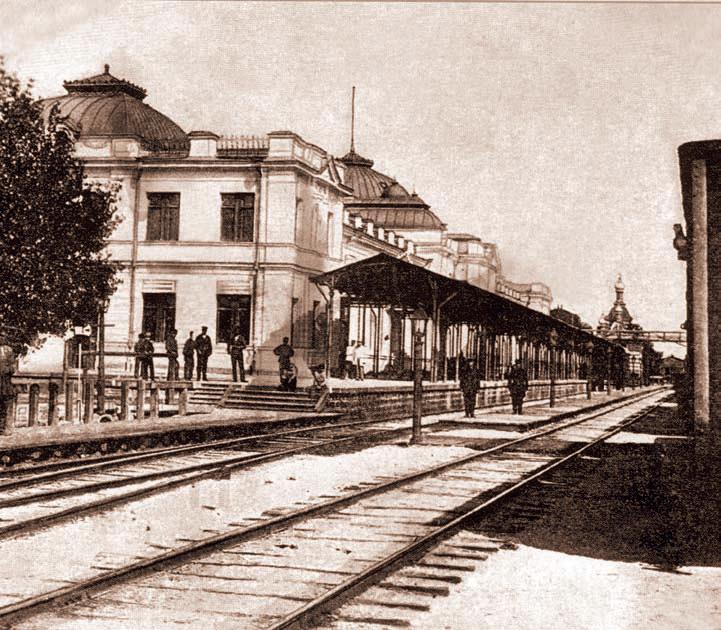 Історія Південної залізниці розпочинається у другій половині ХІХ століття, коли наприкінці лютого далекого
1868 року було винесено на розгляд проект, а вже на початку березня на ім’я харківського міського голови
М. Шатунова з Петербурга надійшла телеграма такого змісту: «Наше клопотання увінчалось успіхом. Відбулось Високе веління про побудову Курсько-Харково-Азовської залізниці. Роботи передбачається розпочати одночасно по всьому шляху. Поздоровляємо місто!». Таким чином було прийнято рішення про будівництво магістралі,
яке і розпочалось у травні 1868 року з дільниці Бєлгород–Харків.
Вже за рік у травні 1869 харків’яни зустрічали перший поїзд. Регулярний рух за напрямком
Курськ–Бєлгород–Харків протяжністю 229 верст було відкрито у липні 1869 року, а ще до кінця того ж
1869 року запрацював і напрямок від Харкова до Ростова протяжністю 538 верст.
Історія Південної залізниці розпочинається у другій половині ХІХ століття, коли наприкінці лютого далекого
1868 року було винесено на розгляд проект, а вже на початку березня на ім’я харківського міського голови
М. Шатунова з Петербурга надійшла телеграма такого змісту: «Наше клопотання увінчалось успіхом. Відбулось Високе веління про побудову Курсько-Харково-Азовської залізниці. Роботи передбачається розпочати одночасно по всьому шляху. Поздоровляємо місто!». Таким чином було прийнято рішення про будівництво магістралі,
яке і розпочалось у травні 1868 року з дільниці Бєлгород–Харків.
Вже за рік у травні 1869 харків’яни зустрічали перший поїзд. Регулярний рух за напрямком
Курськ–Бєлгород–Харків протяжністю 229 верст було відкрито у липні 1869 року, а ще до кінця того ж
1869 року запрацював і напрямок від Харкова до Ростова протяжністю 538 верст.
 Управління Курсько-Харково-Азовської залізниці знаходилось у Харкові. Його
структура була такою: очолював залізницю управляючий, роботою служб
керували контори руху, тяги, головного інженера, магазинного відділу, телеграфу. Важливе значення мали канцелярія
та розрахунковий відділ. У 1875 році до початкових служб додались служби
контролю складання та ремонту колії.
Управління Курсько-Харково-Азовської залізниці знаходилось у Харкові. Його
структура була такою: очолював залізницю управляючий, роботою служб
керували контори руху, тяги, головного інженера, магазинного відділу, телеграфу. Важливе значення мали канцелярія
та розрахунковий відділ. У 1875 році до початкових служб додались служби
контролю складання та ремонту колії.
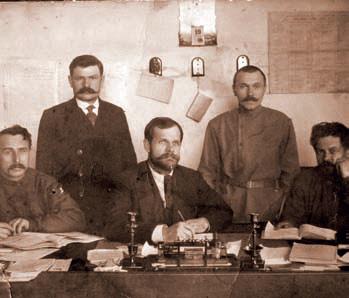 Друга частина, а особливо кінець XIX століття ознаменувались справжнім бумом залізничного будівництва на
Слобожанщині: після Курсько-Харково-Азовської з’являються Харково-Миколаївська та Лозівсько-Севастопольська
залізниці. 3 1896 року залізниця отримала назву Курсько-Харково-Севастопольської, а з 1 січня 1907 року на підставі
відповідної постанови уряду Курсько-Харково-Севастопольська та Харково-Миколаївська залізниці були об’єднані
в одну мережу під загальною назвою Південних залізниць. У 1913 році довжина залізниць, прокладених на
укрaїнських землях, що на той час входили до складу Російської імперії, становила більше десяти тисяч кілометрів,
при цьому майже половина з них належала Південним залізницям.
Друга частина, а особливо кінець XIX століття ознаменувались справжнім бумом залізничного будівництва на
Слобожанщині: після Курсько-Харково-Азовської з’являються Харково-Миколаївська та Лозівсько-Севастопольська
залізниці. 3 1896 року залізниця отримала назву Курсько-Харково-Севастопольської, а з 1 січня 1907 року на підставі
відповідної постанови уряду Курсько-Харково-Севастопольська та Харково-Миколаївська залізниці були об’єднані
в одну мережу під загальною назвою Південних залізниць. У 1913 році довжина залізниць, прокладених на
укрaїнських землях, що на той час входили до складу Російської імперії, становила більше десяти тисяч кілометрів,
при цьому майже половина з них належала Південним залізницям.
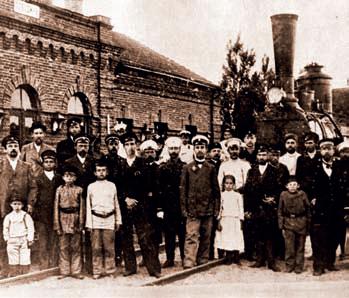 На той час технічна оснащеність залізниці, а також обсяги експлуатаційної
та вантажної роботи досягли найвищого рівня за весь дореволюційний період.
Покращення експлуатаційних показників було досягнуто за рахунок упровадження
нової техніки і передових технологій в усіх галузевих господарствах.
На той час технічна оснащеність залізниці, а також обсяги експлуатаційної
та вантажної роботи досягли найвищого рівня за весь дореволюційний період.
Покращення експлуатаційних показників було досягнуто за рахунок упровадження
нової техніки і передових технологій в усіх галузевих господарствах.
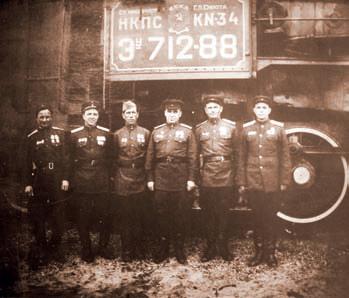 За роки імперіалістичної й громадянської воєн інфраструктура Південних
залізниць зазнала значних руйнувань. Практично не залишилось рухомого
складу, а також висококваліфікованих, технічно грамотних кадрів. Для відновлення
зруйнованого залізничного господарства, здатного на рівні обслуговувати
потреби країни в перевезеннях, було витрачено багато сил і часу. Обсяг вантажних
перевезень досяг передвоєнного рівня лише на початку тридцятих років.
За роки імперіалістичної й громадянської воєн інфраструктура Південних
залізниць зазнала значних руйнувань. Практично не залишилось рухомого
складу, а також висококваліфікованих, технічно грамотних кадрів. Для відновлення
зруйнованого залізничного господарства, здатного на рівні обслуговувати
потреби країни в перевезеннях, було витрачено багато сил і часу. Обсяг вантажних
перевезень досяг передвоєнного рівня лише на початку тридцятих років.
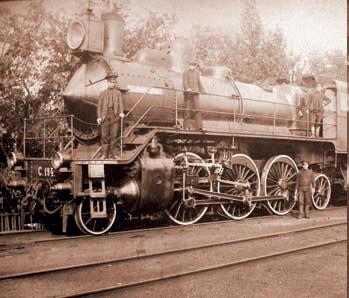 У лютому 1934 року згідно з наказом Наркома шляхів сполучення СРСР відбулось
розгалуження Південних залізниць на дві самостійні — Південну та Донецьку.
У лютому 1934 року згідно з наказом Наркома шляхів сполучення СРСР відбулось
розгалуження Південних залізниць на дві самостійні — Південну та Донецьку.
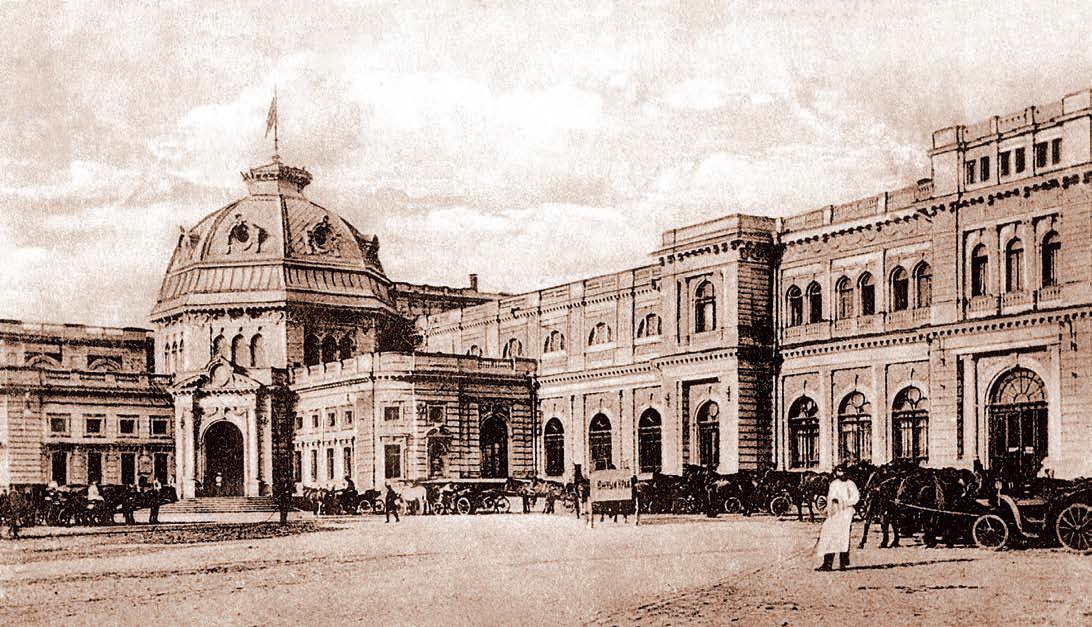 У роки перших п’ятирічок на залізниці було побудовано нові станції і вокзали,
укладено другі колії, проведено реконструкцію залізничних вузлів, удосконалено технологію перевізних і вантажно-розвантажувальних процесів. На лінію
виходили нові локомотиви та вагони, при виконанні ремонтних робіт здійснювалась заміна верхньої будови колії на більш важкі типи рейок.
Широко запроваджувались автоблокування, автозчеп, диспетчерська централізація.
У роки перших п’ятирічок на залізниці було побудовано нові станції і вокзали,
укладено другі колії, проведено реконструкцію залізничних вузлів, удосконалено технологію перевізних і вантажно-розвантажувальних процесів. На лінію
виходили нові локомотиви та вагони, при виконанні ремонтних робіт здійснювалась заміна верхньої будови колії на більш важкі типи рейок.
Широко запроваджувались автоблокування, автозчеп, диспетчерська централізація.
 У роки Великої Вітчизняної війни залізничники Південної забезпечували
своєчасне підвезення озброєння, боєприпасів, пального і продовольства. Застосовувались нові форми експлуатації
рухомого складу, у тому числі організація паровозних колон особливого резерву
НКШС, що здійснювали масові перевезення для фронту. Створені на магістралі
бронепоїзди комплектувались бригадами залізничників. Саме тому перехідний
Червоний прапор Державного Комітету Оборони було передано залізниці на постійне зберігання.
У роки Великої Вітчизняної війни залізничники Південної забезпечували
своєчасне підвезення озброєння, боєприпасів, пального і продовольства. Застосовувались нові форми експлуатації
рухомого складу, у тому числі організація паровозних колон особливого резерву
НКШС, що здійснювали масові перевезення для фронту. Створені на магістралі
бронепоїзди комплектувались бригадами залізничників. Саме тому перехідний
Червоний прапор Державного Комітету Оборони було передано залізниці на постійне зберігання.
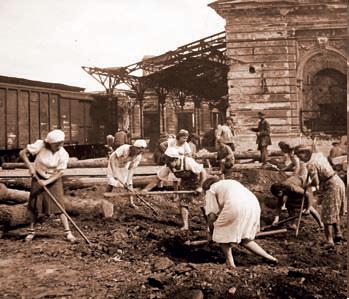 Багатотисячний загін залізничників брав також безпосередню участь у бойових діях на фронтах війни. За мужність
та відвагу, виявлені в боях, 26 залізничників Південної були удостоєні звання Героя Радянського Союзу. За роки
німецько-фашистської окупації залізниці було завдано великих збитків — виведено з ладу до 80% колій, 75% мостів,
повністю зруйновано паровозні й вагонні депо, засоби сигналізації й зв’язку, системи водо- і енергопостачання, службово-
технічні будинки. Незважаючи на всі труднощі, відбудовні роботи на залізниці йшли високими темпами і вже через три
роки після закінчення війни Південна вийшла на довоєнний рівень. У післявоєнні роки на магістралі здійснювали відновлення
зруйнованого господарства, реконструкцію і будівництво нових станцій, вокзалів, прокладання залізничних шляхів,
упровадження нових технічних засобів зв’язку та сигналізації, заміну паровозної тяги на електричну та тепловозну.
Багатотисячний загін залізничників брав також безпосередню участь у бойових діях на фронтах війни. За мужність
та відвагу, виявлені в боях, 26 залізничників Південної були удостоєні звання Героя Радянського Союзу. За роки
німецько-фашистської окупації залізниці було завдано великих збитків — виведено з ладу до 80% колій, 75% мостів,
повністю зруйновано паровозні й вагонні депо, засоби сигналізації й зв’язку, системи водо- і енергопостачання, службово-
технічні будинки. Незважаючи на всі труднощі, відбудовні роботи на залізниці йшли високими темпами і вже через три
роки після закінчення війни Південна вийшла на довоєнний рівень. У післявоєнні роки на магістралі здійснювали відновлення
зруйнованого господарства, реконструкцію і будівництво нових станцій, вокзалів, прокладання залізничних шляхів,
упровадження нових технічних засобів зв’язку та сигналізації, заміну паровозної тяги на електричну та тепловозну.
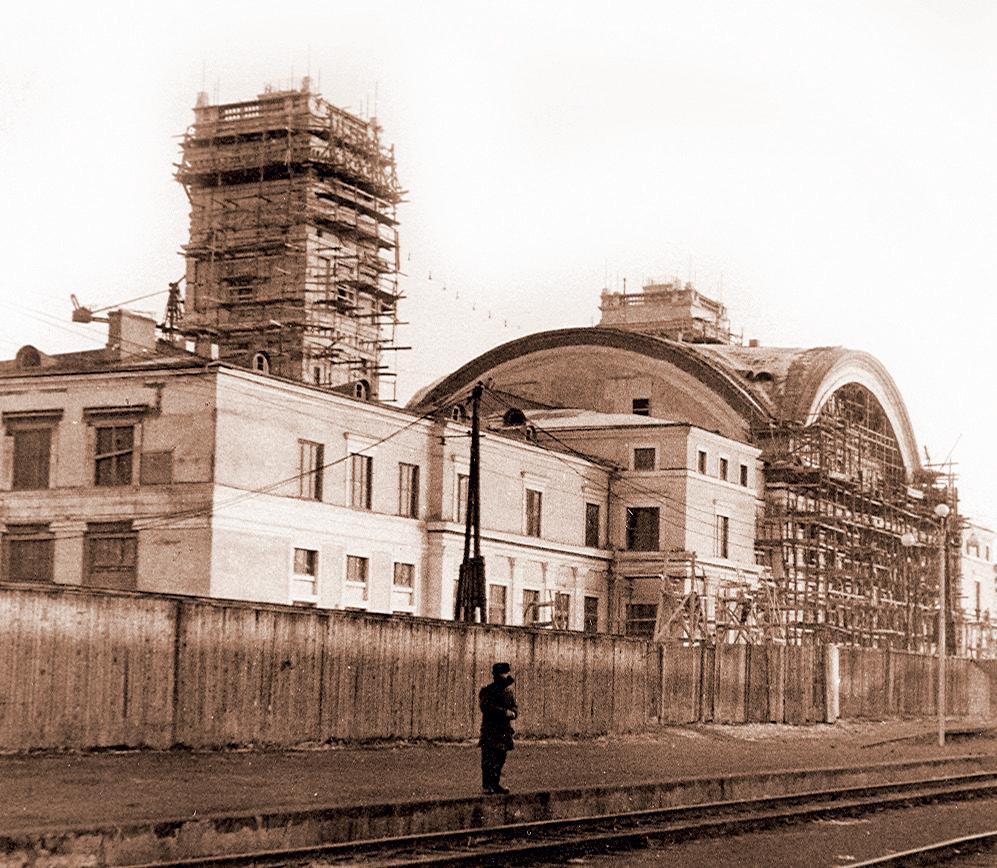 У 1957 році від Харкова до Мерефи пішли перші приміські електропоїзди. Харківська електричка стала початком
втілення у життя плану електрифікації Південної залізниці. У 1960–1961 роках було електрифіковано приміські дільниці
Люботин–Харків, Харків–Лосєве, Основа–Красний Лиман (Донецької залізниці).
У 1957 році від Харкова до Мерефи пішли перші приміські електропоїзди. Харківська електричка стала початком
втілення у життя плану електрифікації Південної залізниці. У 1960–1961 роках було електрифіковано приміські дільниці
Люботин–Харків, Харків–Лосєве, Основа–Красний Лиман (Донецької залізниці).
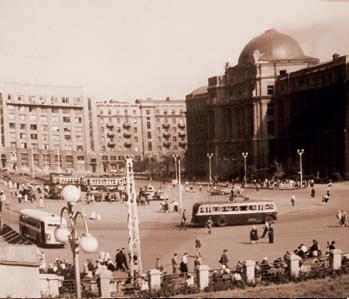 Починаючи з шістдесятих років минулого століття на залізниці упроваджувалась тепловозна та електровозна тяги,
розпочалось укладання колії важкого типу, введено основні виробничі потужності, які забезпечували підвищення
пропускної та провізної здатності дільниць залізниці, її станцій та вузлів, розвивалась також і соціальна інфраструктура.
Починаючи з шістдесятих років минулого століття на залізниці упроваджувалась тепловозна та електровозна тяги,
розпочалось укладання колії важкого типу, введено основні виробничі потужності, які забезпечували підвищення
пропускної та провізної здатності дільниць залізниці, її станцій та вузлів, розвивалась також і соціальна інфраструктура.
Як визнання заслуг колективу та у зв’язку зі 100-річчям магістралі в 1969 році Південна залізниця була нагороджена найвищою відзнакою СРСР — орденом Леніна. Протягом сімдесятих — вісімдесятих років минулого століття самовіддана праця її багатотисячного колективу ще неодноразово відзначалась перехідним Червоним прапором переможця соцзмагання міністерства та ради профспілок.
З розпадом СРСР, долаючи важкі економічні випробування дев’яностих років минулого століття, залізниця змогла стати на шлях розвитку і сьогодні залишається в авангарді впровадження сучасних технологій.